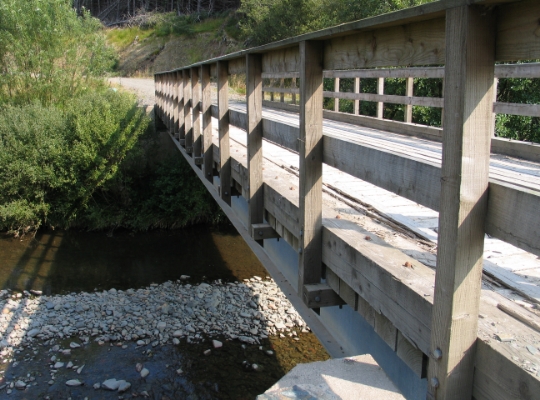Forest infrastructure includes forest roads and rides, bridges, drainage systems, buildings and other facilities that enable management and access. Infrastructure plays a key role in the resilience of forests to climate change risks, such as flood water drainage and access for wildfire response.
As the climate changes the risk of damage to infrastructure will increase, including damage from extreme heat and storms. Infrastructure itself will need to be modified to continue to function, such as increasing capacity for drainage systems.
The indirect effect of adaptation measures made to woodland management which may require different infrastructure should also be considered in, e.g., increased thinning and access. The design and maintenance of forest infrastructure should take account of current and future conditions to ensure they remain suitable and durable.


As the climate changes, the risk of damage to forest infrastructure will increase and adaptation measures need to be considered:
Infrastructure itself will need to be modified to continue to function under future climate conditions and to accommodate adapting forest management practices:
Impacts on infrastructure outside the forest and their impacts on forest industries should also be considered, including impacts on timber transport, power and communications networks, staff travel, and working conditions. Adaptation measures should be incorporated in business continuity plans.
Utilities and infrastructure (not related to forest operations) may be located on or adjacent to forest sites, include power lines, communications networks, fuel lines, water pipes, and wind turbines. The risk to these assets from climate change impacts on the forest should be considered, and adaptation measures agreed in partnership with the provider.
For further advice see the UKFS Practice Guide ‘Adapting forest and woodland management to the changing climate’
Printed copies are available to purchase from Forest Research.
"*" indicates required fields
The following risks may be reduced if the adaptation measure is applied appropriately:
A free online tool to visualise UK climate change data, including average, minimum and maximum temperatures, rainfall, and temperature extremes. It provides indicators of risk including transport, wildfire, agriculture and river levels.